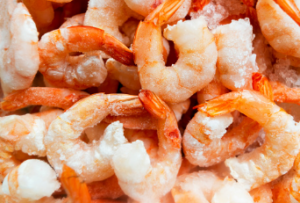Frozen prawns are an ideal way to make a nutritious and speedy dinner. Packed with protein and low in fat, they also provide essential omega-3 fatty acids.
The markwellfoods.co.nz frozen prawns can be used in various dishes, such as curries and paella, pasta, risotto and salads; however, it’s essential to defrost them before cooking.
Defrost
 Frozen prawns make a delicious addition to salads, stir-fries and many other dishes. Not only that, but they’re also an ideal option for those with dietary restrictions or who wish to reduce calories.
Frozen prawns make a delicious addition to salads, stir-fries and many other dishes. Not only that, but they’re also an ideal option for those with dietary restrictions or who wish to reduce calories.
Before cooking markwellfoods.co.nz frozen prawns, they must thaw out. Otherwise, your cooked seafood may become dry, tough and chewy due to lack of hydration. The ideal way to do this is by immersing the frozen prawns in cold water.
It is important to defrost your prawns slowly, as using warm or hot water will cause them to cook unevenly and won’t allow them to cook thoroughly. It could lead to chewy, overcooked prawns you won’t enjoy eating!
Thankfully, there is a solution: defrost your prawns by placing them in a large bowl of water with salt. The salt helps lower the freezing point of water and makes it easier for the shrimp to defrost.
Fill your bowl with generous water and add two tablespoons of salt per 500ml/2 cups. Place the prawns in the water, leaving them to defrost for around 15 minutes while stirring occasionally. Drain and rinse them with cold water before cooking them.
Another efficient and fast method of defrosting prawns is soaking them in brine. This quick method allows you to keep the flavour and texture of the prawns intact while quickly defrosting them.
Defrosting frozen prawns in the microwave is possible! Just be sure to thaw them slowly over 10-15 second bursts, stirring between each burst, so that your prawns don’t overcook and stick together during thawing. It will guarantee optimal freshness during storage.
If you don’t have time to defrost your prawns before cooking them, try defrosting them in the fridge overnight. While this process will take longer than a microwave, it is much quicker than defrosting them in warm or hot water.
Cook
Prawns are incredibly versatile seafood that can be used in many dishes. You can incorporate them into soups, chowders, risottos, gumbos and touffets, to name a few! In addition, you can freeze them later; remember to thaw them before cooking!
Defrosting frozen prawns is a relatively straightforward process. Place them in a bowl of cold water and leave them to thaw overnight, ensuring they are safe to cook when ready to use them.
Another effective method for defrosting prawns is to place them in a colander and run warm water over them. It will help the shrimp thaw more rapidly and evenly.
A colander is ideal for removing frozen prawns from water without disturbing them, ensuring they have been thoroughly thawed before cooking. It is especially useful if you have multiple prawns to defrost at once.
Colanders make thawing prawns easier by allowing you to drain any leftover liquid from the water used during thawing. Doing this reduces the risk of bacteria developing in cooked prawns, enabling them to stay safely frozen for extended storage in your freezer.
If you want to expedite defrosting, you can always place some prawns in a microwave and heat them on high for around 3 minutes. However, this method should only be used occasionally as overcooking can lead to overcooked seafood.
Additionally, microwave defrosting of prawns can damage their cells and protein integrity, potentially leading to food poisoning. That is why many chefs and fishmongers don’t recommend using a microwave, even on the lowest setting to defrost prawns.
Instead, let the prawns defrost naturally by leaving them in the fridge until you are ready to use them. Running water through a colander will help them thaw more evenly so that you can quickly enjoy an incredible meal made of your prawns!
Preparation
Frozen prawns are an ideal option when you need to cook a meal but lack the time for fresh preparation. They have the same taste, texture and nutritional value as fresh prawns, so they can be used interchangeably in most recipes.
However, they should be defrosted before cooking to guarantee they remain safe and edible. You can thaw frozen prawns by placing them in a bowl of cold water for 15 minutes or in a colander and running them under water. It is essential to use cold water when defrosting frozen prawns as warm or hot water may unevenly cook them, leading to an unpalatable dish with less nutritional value.